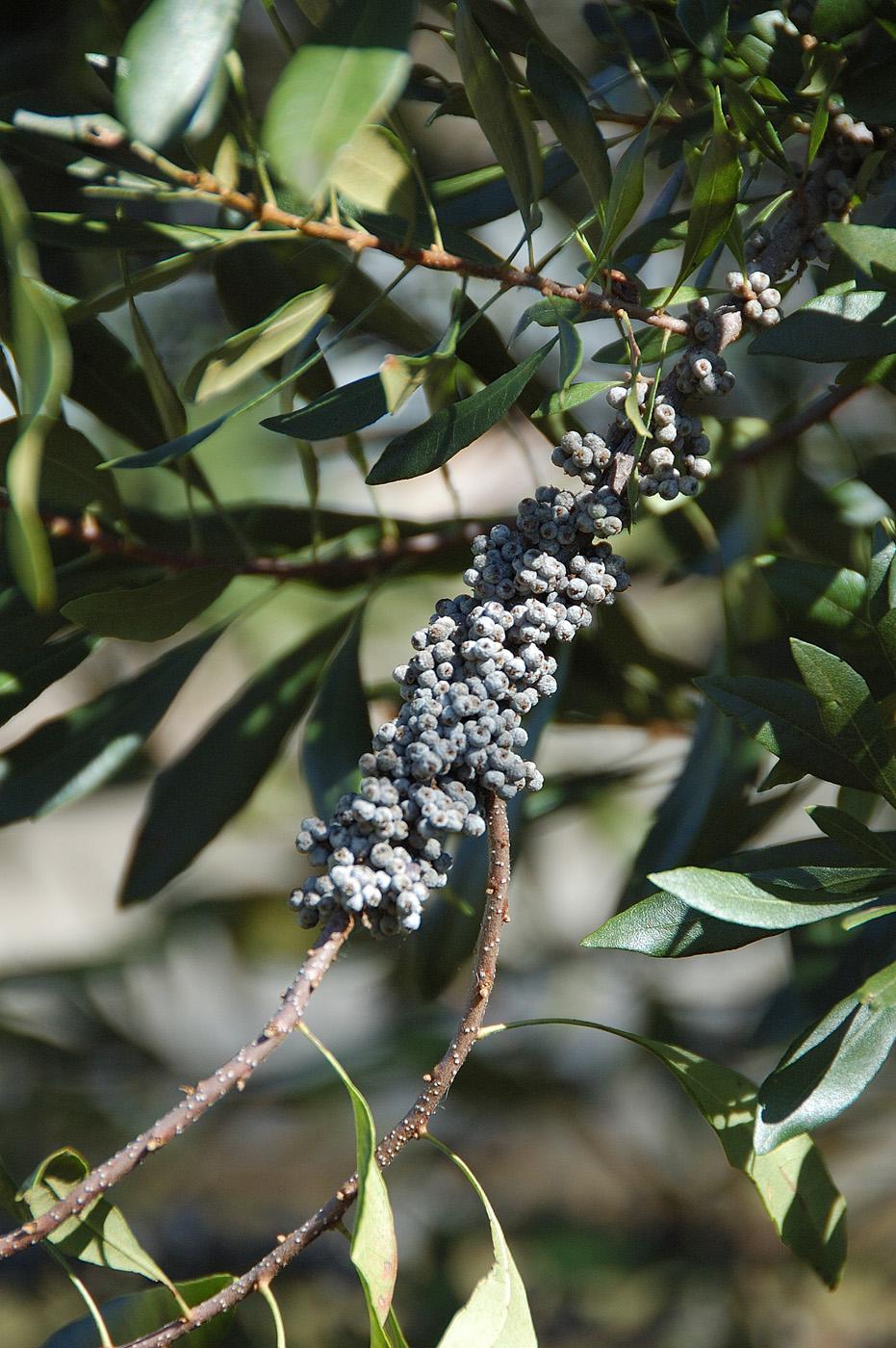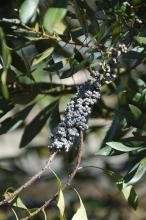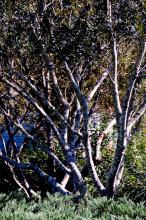Information Possibly Outdated
The information presented on this page was originally released on October 22, 2009. It may not be outdated, but please search our site for more current information. If you plan to quote or reference this information in a publication, please check with the Extension specialist or author before proceeding.
Wax myrtles make great native choice
By Norman Winter
MSU Horticulturist
Central Mississippi Research & Extension Center
In my region, the southern wax myrtle reigns supreme. When I say “my region,” you might think I mean the Deep South, but actually it stretches from Texas to the East Coast and as far north as New Jersey. You could not ask for a better small tree to act as a privacy screen around a porch, patio, deck, or garden bath or to soften harsh walls. Coastal residents are always looking for plants tolerant of salt spray, and wax myrtles are among the best.
The southern wax myrtle is known as Myrica or Morella cerifera. It can grow over 30 feet tall, but I most commonly see them in the 15 to 20 feet range. The foliage is evergreen, and the white to grey multiple trunk structure looks interesting in the landscape. The leaves are aromatic when crushed.
The southern wax myrtle is almost always unisexual or dioecious. In other words, there are male and female plants. Though still mostly sold generically, there are a number of named selections.
The southern wax myrtle is one of the most prolific berry-producing plants. Thousands of small, waxy, blue fruit are produced in clusters or mounds along stems. This is a must-have plant for bird lovers, as it feeds around 40 species.
The waxy fruit was once boiled and used to make bayberry candles. But the real candle-producing species is the Myrica or Morella pensylvanica, known also as northern bayberry or candleberry.
This species is semi-evergreen to deciduous and is much more cold hardy. It is also smaller than the southern wax myrtle. Though considered a northern species, it grows successfully as far south as northern Georgia.
The fruit on the northern bayberry is larger and grayish white. These highly aromatic berries are still used in candle making and, like southern wax myrtle berries, considered a delicacy by a host of birds.
The west coast is certainly not left out. The Myrica or Morella californica is known as Pacific or California wax myrtle. It too grows to about 12 feet tall but is a little more shrub-like in appearance. The berries that mature to deep purple are waxy but not aromatic and are not used in candles. They are, however, treasured by native bird populations.
The northern wax myrtle and the Pacific wax myrtle may be dioecious or monecious. In other words, there are male plants, female plants, and plants with both flowers; spring bloom will reveal which is which.
These plants are outstanding because of their wide range of soil adaptability, landscape use, and fruit for birds. Fall is a great time to plant a wax myrtle. Choose one--or two or three--for your home.









